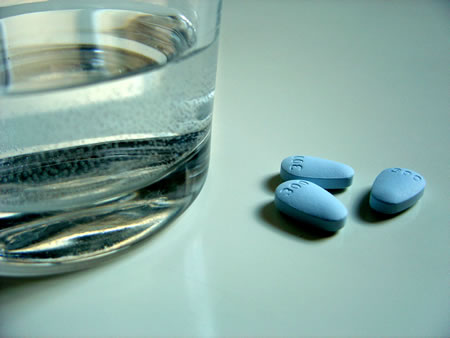Cost-Effectiveness of Tenofovir in First-Line HIV Treatment
Study in India Supports Drug's Expanded Use
February 2010—In November 2009, the World Health Organization (WHO) released revised recommendations indicating that the antiretroviral drug tenofovir may be included in first-line HIV treatment regimens for adults, and that stavudine (known as d4T) should be phased out of global HIV programs in the future. Tenofovir costs more than stavudine, but patients only have to take tenofovir once a day. In a recently published study, researchers analyzed the cost-effectiveness of using tenofovir in first-line regimens in India to assess the feasibility of implementing this recommendation.1
Cost-effectiveness research looks at the financial costs required to deliver an intervention in order to achieve a desired benefit, often described in terms of the years of life saved. Costs are compared between different interventions to find out which bring the greatest benefit for the money. Cost-effectiveness analyses can help inform national programs considering whether to implement an intervention. In this study, researchers analyzed the costs of using tenofovir (estimated in India at US$14/month) and the impact of antiretroviral therapy, drug side effects, and opportunistic infections on years of life saved.

Photo: avert.org |
Including tenofovir in first-line regimens in India was found to be more cost-effective than regimens with zidovudine and/or stavudine, meaning that using tenofovir resulted in more years of life saved for the costs of buying the drug and managing side effects. Having a low or high CD4 count at the beginning of treatment did not have an important effect on the results. And as the predicted price of future second-line regimens went down, the cost-effectiveness of tenofovir increased. However, if the price of tenofovir rose above US$40/month, it would no longer be cost-effective in India by WHO standards.
Although this study supports the inclusion of tenofovir in first-line regimens in India, this may not be feasible in poorer countries or where the price of tenofovir is higher. Lower drug prices can help low- and middle-income countries afford treatments that lead to greater benefits in survival and quality of life for people living with HIV
1Bender MA, et al., for the Cost-Effectiveness of Preventing AIDS Complications (CEPAC)-International Investigators. Cost-effectiveness of tenofovir as first-line antiretroviral therapy in India.
Clinical Infectious Diseases. 2010;50:416–25.